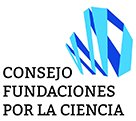Born more than thirty years ago with the purpose of overshadowing the United States, it is apparently achieving its objective. The EMBL –the European Molecular Biology Laboratory headquartered in Heidelberg– is presently one of the reference research centers in Europe. Eighty-five percent of the scientists that have worked in its premises have decided to pursue their career in the Old Continent. It is funded by eighteen European countries, with an annual budget of 45 million euros. Beyond finance matters, however, a number of peculiarities make this laboratory unmatchable by any Spanish center.
Luis Serrano, indeed a Spaniard, is currently directing one of EMBL’s Research Units, specifically the Department of Structural and Computational Biology. Luis Serrano has been working in Heidelberg since 1992, but his is an exceptional situation; indeed, most of its 1,000 workers may not stay at the laboratory for more than nine years. Staff renewal is constant, as is the inflow of new ideas. Scientists arrive, are trained, produce science and then return to their places of origin.
Dundee is another scientific feud in Europe. Although probably not as well known as Heidelberg –the former being the fourth city of Scotland, with little more than 150,000 inhabitants–, Biotech Companies have been attracted by the potential of Dundee’s research centers and have made good investments in the area. When Extremenian scientist Ana Cuenda first arrived in Dundee in 1994, only four research companies had settled in. There are more than forty today. Back then, this Spanish researcher arrived with a scholarship from the Spanish Ministry of Education and Science. Today she is one of the group Heads of the Protein Phosphorylation Unit of the Medical Research Council, a British Public Agency similar to the Spanish CSIC (High Council of Scientific Research), although politically independent.
Ana Cuenda speaks very enthusiastically about her research center and also about the attitude of the Scottish society. Dr. Cuenda proudly recalls an anecdote that tells of the population’s sensitivity towards scientific matters. A few years back, when a million pounds was still needed to build a new center in Dundee, scientists launched a fund-raising campaign. Not only did they seek the involvement of actors like Sean Connery or Brian Cox, they also stood guard at supermarket doors! “People were greatly involved and 15,900 pounds were raised. I doubt this could happen in Spain”, says the researcher, not without disappointment.
Luis Serrano and Ana Cuenda are the two lecturers who attended the cycle Science in Europe, organized by Aula El País in collaboration with the Esteve Foundation, in an attempt to approach the reality of research in some European countries and –almost by comparison– in Spain. But comparisons, of course, are odious…
Everything in the EMBL –Luis Serrano’s working place– is duly regulated, from Doctorate programs to technology transfer. The center itself manages the patents and creates its own biotech companies, whose gains are reinvested in the laboratory. On account of less bureaucratic hindrances, researchers may gain relatively easy and fast access to all necessary instruments.
The performance of the Heads of the different units is evaluated periodically and the quality of their team’s work is reviewed: this is a must, says Luis Serrano. “While it is true that there is an increasing proliferation of generously funded scientific centers or parks in Spain, there is also a need for established regulations, instead of these being eventually imposed by any appointed director. For these centers to be effective, sound assessment and renovation policies –similar to those of the EMBL model– ought to be implemented“.
In Ana Cuenda’s view, the Spanish scientific model needs dynamism –an inherent factor at the laboratories where these two researchers work. “In Spain, centers are static, always with the same people. Conversely, our center in Dundee is enriched by variety.” More than 51 different nationalities live together at Dundee’s Medical Research Council. According to our Extremenian scientist, this is one of the formulas for the success of this Unit, together with the common goal pursued by all its components. “We Spaniards, says she, are very endogamic. We always look for scientists of our own country and leave little room for foreigners”.
Until we do leave a little room, migration will remain a customary way of promotion for our scientists. But these two researchers are optimistic about the evolution of our country. “Spain is finding its place in the scientific map and has gained attractiveness. However, we need to maintain the funding levels to make it even more attractive”, concludes Luis Serrano.






